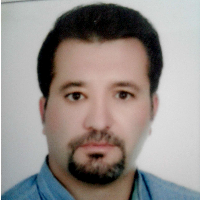Effect of Mulch and Herbicide on Weed Control and Strawberry (Fragaria ˣ ananassa) Yield in Khuzestan Conditions
Considering the popularity of strawberry crop as well as its vulnerability to pests such as weeds, it seems necessary to employ methods to increase its production. Therefore, a study was conducted to evaluate the feasibility of strawberry production in the southern regions of Khuzestan province and inhibit broadleaf and narrow-leaf weeds in strawberry using new pre-planting or pre-emergence herbicides in combination with some types of mulch.
An experiment was conducted in a split plot in a randomized complete block design with three replications in Agricultural Sciences and Natural Resources University of Khuzestan in 2018 growing season. Experimental treatments including two types of herbicide, trifluralin (2 L ha -1 ) and indaziflam (100 ml h-1 ) applied under mulch surface as main plots and soil surface cover with three types of mulch, chopped leaves of date, polyethylene (black plastic), sugar cane bagasse, and without mulch as sub plots were considered. Weeds were sampled after herbicide treatments (56 days later). Harvesting began eight weeks after planting the rooted seedlings in the main field. Also, yield components including fruit number, fruit diameter and total fruit weight were measured.
The results showed that the application of polyethylene mulch and chopped leaves of date was generally better than the non-mulched and sugarcane bagasse mulch treatments in weed control. Both herbicides, on average, reduced the dry weight of weeds by more than 50% compared to control. Results showed that the interaction effects of herbicide and mulch treatments were significant only on fruit anthocyanin, while other fruit quality traits including ascorbic acid, total acidity, and taste index were not significantly affected by mulch and herbicide treatments. The highest number of fruits (52.96 and 47.51 fruits m -2 ) was in polyethylene and indaziflam treatments. The highest fruit diameter (31 mm) was in polyethylene plus the application of indaziflam and the highest total fruit weight (1049.3 and 880.2 g m -2 ) was observed in polyethylene and indaziflam.
In general, polyethylene mulch, along with herbicide application, was the most effective treatment for strawberry weed control. Regarding strawberry yield indices, the use of polyethylene mulch increased the yield and fruit quality. For quality indices, the use of trifluralin is recommended if the mulch is not used and the use of polyethylene mulch is recommended if the herbicide is not used.
- حق عضویت دریافتی صرف حمایت از نشریات عضو و نگهداری، تکمیل و توسعه مگیران میشود.
- پرداخت حق اشتراک و دانلود مقالات اجازه بازنشر آن در سایر رسانههای چاپی و دیجیتال را به کاربر نمیدهد.


